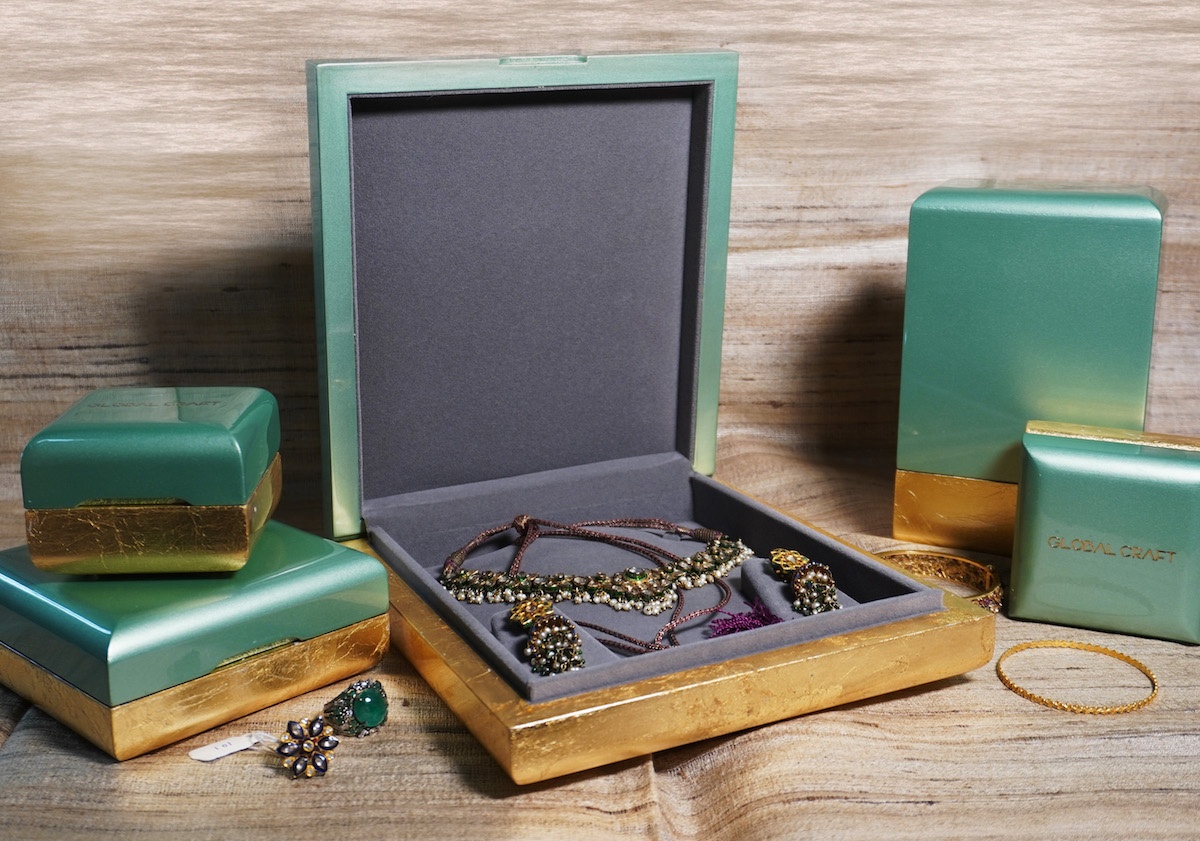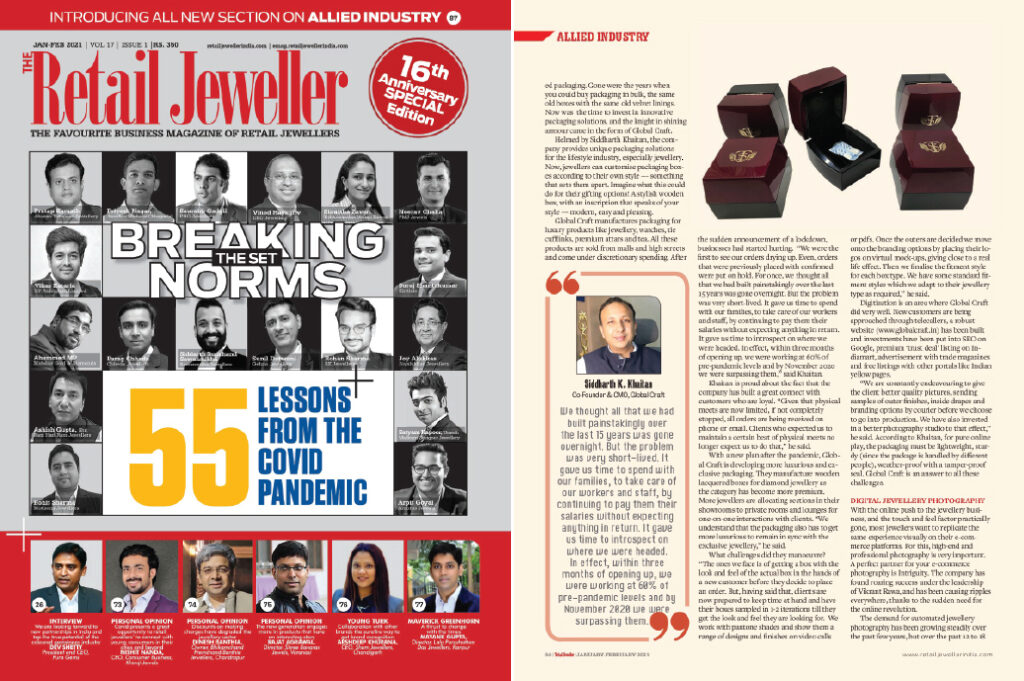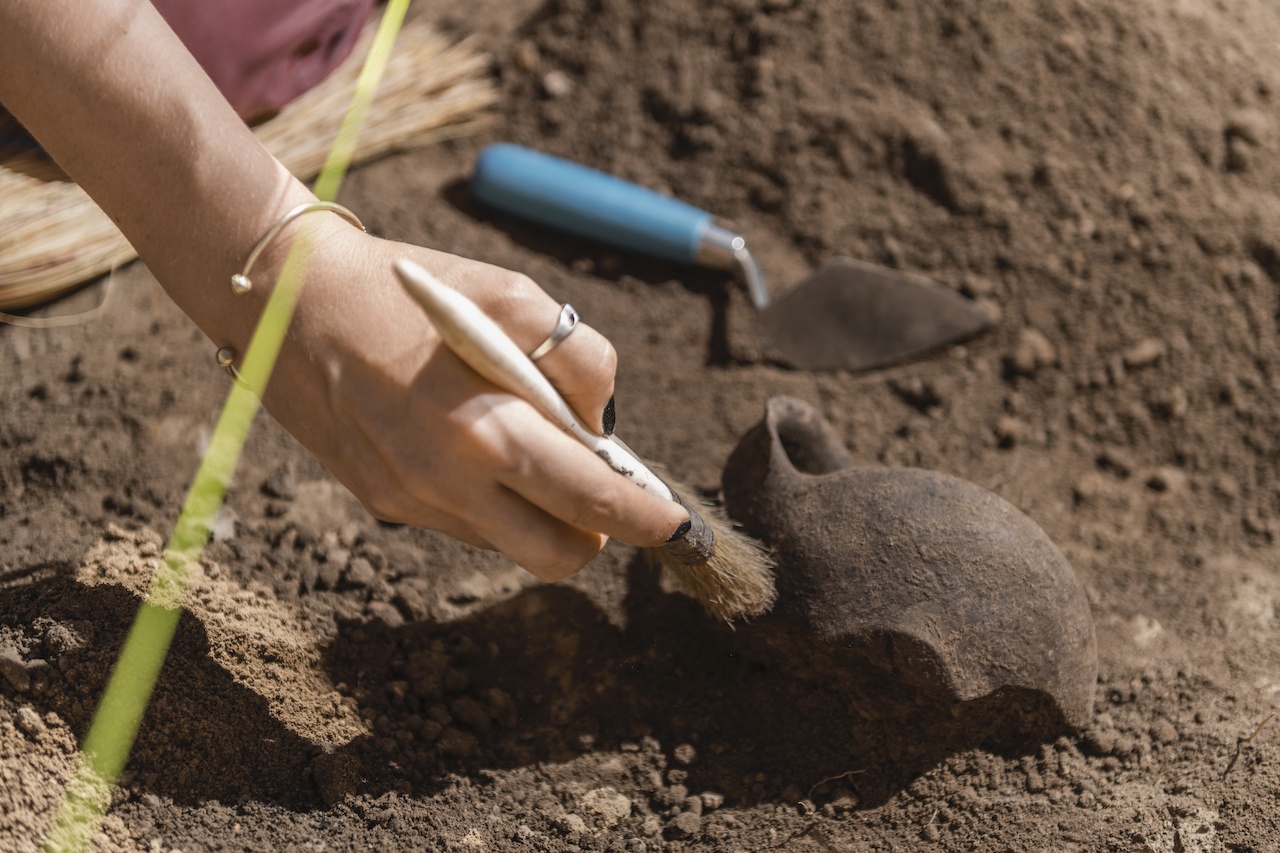
Below is the complete transcript of our co-founder & CMO Mr Siddharth Khaitan’s interview with The Retail Jeweller. He talks about the importance of packaging in the Jewellery Industry, how Global Craft fulfils the needs of leading Jewellers across the country and how despite Covid-19, Global Craft continued being a trusted Jewellery Box Manufacturer for all its clients.
The pandemic has affected everyone in varied ways. How have you been affected as a Jewellery Box Manufacturer?
The pandemic certainly came as a great shock. Everything got shut down all of a sudden when our honourable PM Shri Narendra Modiji announced a Janta Curfew on the 22nd of March, 2020. The curfew then got extended to a long nationwide lockdown. Well, that’s what it seems to be.
But was it all that sudden? The 1st case of the Novel Corona Virus was found in December 2019. No one was really concerned about the spread in India then. But, towards the end of February 2020, all of us had started growing a little concerned, businesses had started hurting. It was quite obvious by now, for anyone who had his eyes open that this is growing into something much bigger.
Global Craft manufactures packaging ( wooden boxes ) for Luxury products like Jewellery, Watches, Tie Cufflinks, Premium Attars & Teas. All these products are sold from malls/high streets and come under discretionary spending. We were the first to see our orders drying up. Even, orders that were previously placed with confirmed Purchase Orders were put on hold. We voluntarily shut down our manufacturing facility on the 20th of March, 2020.
Were we affected! Well, we all choose to believe we were. And yes, we certainly were affected! Who was not? For once, we thought all that we had built painstakingly over the last 15 years was gone overnight. But, the problem was very short-lived. It gave us time to spend with our families. To take care of our workers and staff, by continuing to pay them their salaries without expecting anything in return. It gave us time to introspect on where we were headed. To weed out the chaff from the grain. In effect, within 3 months of opening up on the 4th of May, we were working at 60% of pre-pandemic levels and by November 2020 we were surpassing pre-pandemic levels.
Physical meets and plans with clients and jewellers are limited now. How are you taking the production of Wooden Jewellery Boxes to new heights?
We have been in business for 15 years now. We have built a great connection with our customers who are loyal to us. Given that physical meets are now limited, if not completely stopped all orders are being received on phone or email. Clients who expected us to maintain a certain beat of physical meets no longer expect us to do so.
A few things we have done to ensure the flow of new customers:
- New customers are being approached through tele callers.
- We have built a robust website www.globalcraft.in and have channelised the money we otherwise spent on travel and hotel stay on:
- SEO on Google
- Premium ‘Trust Seal’ Listing on Indiamart
- Advertisement with trade magazines
- Free listings with other portals like Indian yellow pages.
New clients also don’t want to meet suppliers for optional work. They are looking online and finding us. Never before have we been approached by new customers on their own as we are being now. Work that doesn’t necessarily require physical meeting is being carried out on Video Calls in the comfort of each of our offices.
What things are you doing differently for Jewellers?
We are developing more luxurious and exclusive packaging. We manufacture wooden lacquered boxes for diamond jewellery. We have noticed that the diamond jewellery experience has become more premium. More and more jewellers are allocating sections in their showrooms to private rooms/lounges for one to one interactions with clients. This is making the jewellery and the experience even more luxurious. We understand that the packaging also has to get more luxurious to remain in sync with the exclusive jewellery.

How do you think the industry has evolved? What positives do you see, and what are the negatives?
In my understanding, jewellery in the Indian context was always looked at as an investment. Something, that looks great to wear, increases in value, is backed by the trust of the jeweller and is an asset in times of distress.
Also, Indians primarily buy jewellery either on festivals like Akshay Tritiya & Diwali OR for weddings in the family. We all know, due to Covid-19 weddings were postponed and the ones now happening are no where close to the pre-pandemic grandeur. It would take us sometime to get there, given our large population and the apprehension around the efficacy of the vaccines that have been developed by our able doctor/scientist community.
This, low key celebration leaves a lot of budget for people to allocate to their most preferred form of investment, Jewellery. I believe, this is big positive and we are seeing the effects of it in the sales conversions of all our jewellery clients.
I see 2 negatives. One, due to scale downs a lot of service class people have lost their jobs, this has resulted in low disposable income in the hands of population that bought gold jewellery hence that segment of the jewellery business is affected.
Two, since gold has always been a safe haven asset, due to the uncertainty caused by the pandemic, gold prices had risen to an all-time high of Rs.56000/- per 10 grams from the 35000/- per 10-gram levels. Currently, as this article goes to print gold prices are at 46000/- per 10 grams. Such swings in the price of gold never go down well with the customer and customers tend to defer their purchases till they see certain stability in prices.
Digitisation is the need of the hour and the jewellery industry is fast adapting to it. How are you adapting to it? How has it changed the allied industry?
As stated in my earlier response. We have done all the following:
- New customers are being approached through tele callers.
- We have built a robust website www.globalcraft.in and have channelised the money we otherwise spent on travel and hotel stay on:
- SEO on Google
- Premium ‘Trust Seal’ Listing on Indiamart
- Advertisement with trade magazines
- Free listings with other portals like Indian yellow pages.
We are constantly endeavouring to give the client better quality pictures, pictures from more angles, sending samples of outer finishes, inside drapes and branding options by the courier before we choose to go into production. We have also invested in a better photography studio to that effect.
With a lot of business happening online now, how have you manoeuvred through the waters? Can you speak about some specific challenges?
We are in the B2B space. The changes are more dramatic in the B2C space. For our existing customers, the client is familiar with the touch and feel of the outer & inner drapes of the box, so there are no challenges there.
The challenges we face is of getting a box with the look and feel of the actual box in the hands of a NEW customer before he/she decides to place an order. But, having said that, clients are now prepared to keep time at hand and have their boxes sampled in 1-2 iterations till they get the look and feel they are looking for.
We work with Pantone shades and show them a range of designs and finishes on video calls or pdfs. Once the outers are decided we move onto the branding options by placing their logos on virtual mockups giving close to a real-life effect. Then we finalise the fitment style for each box type. We have some standard fitment styles which we adapt to their jewellery type as required.
Where do you think the allied industry can improve to cater to retailers and jewellers?
There are 2 parts to this question.
- General improvements
We are manufacturers of premium wooden boxes for jewellery packaging. We have to look at the problems being faced by the jewellers both functionally and aesthetically. Normally as box manufacturers, we tend to focus on what changes we can bring to the packaging given our manufacturing capabilities. Sometimes those changes might not be relevant to the jeweller. We have to spend time right from the store in charge storing the cartons of boxes by providing him proper large font packing slips with the date of packaging for him to manage the inventory on a FIFO basis. To the counter salesperson showing and packaging the jewellery after a sale for him to easily find well-fitting slots for placing and fixing the jewellery snug inside the packaging box easily. To the billing executive who has to ensure he reads the naming and specifications tag and puts the jewellery back in the most aesthetic manner so that functionality (the tag) does not interfere with the beauty of the jewellery in the packaged form.
- Pandemic induced improvement
- Content Digitisation – maximum content should be uploaded on websites.
- Better photography setups – Box manufacturers are expected to invest in better setups for product photography to give a closer to life experience while seeing pictures online.
- Pictures from different angles of the packaging material – Rather than single pictures, multiple pictures of each product should be uploaded for a better understanding of the all-around look and feel of the packaging.
- Pictures should be taken with relevant artificial jewellery placed inside the packaging to give a close feel to how the real jewellery piece would look once packaged in the box.
Where do you see the jewellery industry in the next five years? How do you think your association may evolve?
The jewellery industry is at an inflexion point. Traditionally jewellery has only been looked at as an investment in India. Now, GenX (in their late 40s) & Gen Y (marriageable age & earning well with no immediate liabilities) are increasingly looking at jewellery as a fashion & Lifestyle offering. This is expected to result in an increased demand for jewellery.
Brands which are expected to do well are the ones which tick off the following:
- Have been around for a long time or that exude the trust of being around in the long run.
- Constantly innovate their designs to make them lightweight like hollow gold chains and small diamonds put together to achieve the look of a larger stone.
- Bring in youthful collections for daily office and casual wear, coupled with an investment value proposition.
As far as our association goes, we see Gen X & Gen Y placing as much importance to the buying experience and product presentation as to the product itself. We see the above factors contributing to surge in the number of jewellery pieces sold. We, at Global Craft, are focussed and committed to Box Design, Manufacturing Efficiency, Quality Consistency and Timely Delivery. Given this we see a very bright future for the jewellery industry and our association with our clients.
With a lot of jewellers doing home delivery, there is a problem in terms of big packages that were predominant in the pre pandemic days and jewellers would normally go for elaborate designs that reflected the ethos of their grand stores. That has changed now. What kind of packaging solutions are popular now?
The elaborate designs are here to stay as stated earlier but, I agree smaller, funkier, lighter pieces will dominate the online jewellery space which presently is dominated by 2 key players namely Caratlane and Bluestone. All jewellers are trying to build an online presence as well, this is a welcome move. Customers may surf and filter the type of jewellery based on jewellery type, gold weight, caratage, studded/non-studded, price point etc. They then have the option of calling for 3-4 specific pieces of jewellery to their homes and deciding which one to retain. This is a hybrid model (online selection meets offline delivery) where the same packaging is used as was traditionally being used by the jeweller.
For pure online play, the packaging has to answer the following concerns:
Lightweight – The special logistics partners carrying jewellery have to charge commensurate to the value of the jewellery given the high cost of pick up, shipment & last-mile delivery and Insurance of the shipment. The packaging has to kept as lightweight as possible to ensure shipping viability.
Strength – Since the package exchanges hand a few times. The packaging has to be sturdy enough to withstand these exchanges so that it reaches the customer in pristine condition.
Weather-proof – Due to the length and breadth of our diverse country, weather conditions might be significantly different in the part of the country from where the jewellery is shipped to the part of the country to which it is shipped. The packaging has to keep in mind that the jewellery in transit is protected from extreme weather changes during the transit time.
Seal – Since the package is a high-value product, the packaging has to have a tamper-proof seal with a clear indication to the customer to not accept the package if the seal looks tampered.
Visibility – Since online has its own restrictions, sometimes the customer is unable to assess the size, colour and look of the jewellery she is buying. Online customers have to be given the option of return of the jewellery piece. It could be a challenge to return a jewellery piece that has been opened out of the original packaging. The packaging should provide a window by which the customer is able to make out with relatively high accuracy, without opening the box that she intends to retain the jewellery piece.
Any packaging that fulfils the above criteria is the most plausible solution and will be the popular solution for online jewellery sales.

